#online learning wordpress theme
Explore tagged Tumblr posts
Text
7+ Best Art Portfolio Website WordPress Premium Theme

Art Portfolio Website WordPress Premium Theme
Creating an art portfolio website is essential for artists, designers, and creatives to showcase their work and attract potential clients. Let’s explore some of the best WordPress premium themes specifically designed for art portfolio websites:
1. Dabble – Creative Agency & Portfolio WordPress Theme:

A sophisticated and stylish theme with multiple menu layouts, sliders, and preset blog post styles.
Features a portfolio system using a custom post type, allowing you to display your projects effectively.
Available in both free and premium versions, with advanced controls in the premium version.
2. Rubrash – Personal Portfolio WordPress Theme:

Known for its rock-solid coding and fantastic support.
Offers full-width portfolio layouts, including checkerboard style and carousel options.
Utilize the drag-and-drop Elementor Builder to create stunning pages for each portfolio entry.
3. Swipy – Creative Agency WordPress Theme:

A flexible and feature-rich theme powered by the Elementor page builder plugin.
Suitable for various types of websites, including art portfolio website.
Explore its extensive library of over 300 templates for startups, freelancers, and personal sites.
4. Kulluu – Creative Agency WordPress Theme:

A minimalist freelancer and agency portfolio theme.
Ideal for showcasing your work with a clean and modern design.
5. Bionic- Personal Portfolio WordPress Theme:

Another portfolio WordPress theme that emphasizes simplicity.
Perfect for artists, photographers, and creative professionals.
6. Cretic – Creative Agency WordPress Theme:

A multi-concept artist and creative agency theme.
Offers versatility and a variety of options for different types of art portfolio website.
7. Mifo – Creative Minimal Portfolio WordPress Theme:

A clean and minimal multipurpose theme suitable for art portfolio website.
Focuses on elegant design and typography.
Remember to choose a theme that aligns with your artistic style, provides an excellent user experience, and effectively showcases your work. Happy creating! 🎨🖌️
For more options, you can explore other themes from ThemeForest. Each of these themes has unique features and customization options to suit your specific needs.
#premium wordpress themes#premium wordpress theme#app landing wordpress theme#wordpress premium themes#education wordpress theme#education & online course wordpress theme#paid wordpress themes#consulting business wordpress theme#online learning wordpress theme#wordpress plugins#art portfolio website#Art Portfolio Website WordPress Premium Theme#Creating an art portfolio website is essential for artists#designers#1. Dabble – Creative Agency & Portfolio WordPress Theme:#A sophisticated and stylish theme with multiple menu layouts#sliders#and preset blog post styles.#Features a portfolio system using a custom post type#allowing you to display your projects effectively.#Available in both free and premium versions#with advanced controls in the premium version.#2. Rubrash – Personal Portfolio WordPress Theme:#rubash#Known for its rock-solid coding and fantastic support.#Offers full-width portfolio layouts#including checkerboard style and carousel options.#Utilize the drag-and-drop Elementor Builder to create stunning pages for each portfolio entry.#3. Swipy – Creative Agency WordPress Theme:#swipy
4 notes
·
View notes
Text
Edplus - University and Online Courses LMS WordPress Theme
Transform your educational platform with Edplus, the ultimate WordPress theme designed specifically for university online courses. Built with Elementor and integrated with Tutor LMS, Edplus empowers you to create an engaging, user-friendly learning experience that captivates students from the moment they land on your site.
Read More - https://www.templatemonster.com/wordpress-themes/edplus-university-and-online-courses-lms-wordpress-theme-517440.html
#lms wordpress theme#online learning#online course#wordpresstheme#elementortheme#education#education wordpress theme#courses#courses selling wordpress theme
0 notes
Text


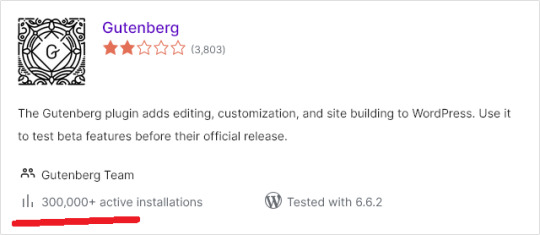
How to use Classic and Block editors simultaneously in WordPress?
#Classic Editor#Classic Widget#Classic Menu#Gutenberg#Classic Theme#Block Themes#Technology#Magazine#WordPress#Make Money Online#Online Learning#Web Development
0 notes
Text
WordPress Web Development: Your Ultimate Course Guide
WordPress is the world's most popular content management system (CMS), powering over 40% of all websites. Its flexibility, ease of use, and powerful features make it the go-to platform for web developers and businesses alike. If you want to excel in web development, mastering WordPress is a crucial step. Enrolling in a WordPress web development course can provide you with the skills and knowledge needed to create professional, dynamic websites. This article will delve into the benefits of taking a WordPress web development course, highlight some top course options, and offer tips to get the most out of your learning experience.
Why Enroll in a WordPress Web Development Course?
Comprehensive Learning Experience
A well-structured WordPress web development course offers a complete learning experience, covering everything from the basics of setting up a website to advanced development techniques. This ensures you gain a thorough understanding of WordPress and its capabilities.
Practical Skills
Hands-on projects and practical exercises are a staple of most WordPress courses. These activities help you apply theoretical knowledge to real-world scenarios, enhancing your understanding and building your confidence.
Expert Guidance
Courses are often taught by experienced professionals who provide valuable insights, practical tips, and personalized feedback. Learning from industry experts can significantly accelerate your learning curve.
Up-to-Date Knowledge
WordPress is constantly evolving with new features and updates. A good course ensures you stay current with the latest developments and best practices in WordPress web development.
Career Advancement
Completing a reputable WordPress web development course can enhance your resume and career prospects. It demonstrates your commitment to learning and mastering web development, making you more attractive to potential employers or clients.
Top WordPress Web Development Courses
1. The Complete WordPress Development Course by Udemy
This comprehensive course by Udemy is perfect for those looking to master WordPress development. It covers everything from basic setup to advanced theme and plugin development. Instructor Juan Pablo De la Torre Valdez provides over 20 hours of video content and numerous practical projects.
Key Features:
Comprehensive curriculum
Extensive video content
Practical projects
Certificate of completion
2. WordPress for Beginners – Master WordPress Quickly by Udemy
Ideal for beginners, this course by Andrew Williams covers the essentials of setting up and managing a WordPress site. The course includes over 10 hours of video content, practical exercises, and lifetime access to materials.
Key Features:
Beginner-friendly
Comprehensive coverage
Practical exercises
Lifetime access
Certificate of completion
3. WordPress Development – Themes, Plugins & Gutenberg by LinkedIn Learning
LinkedIn Learning’s course, taught by Morten Rand-Hendriksen, focuses on essential web development skills using WordPress. The course covers theme customization, plugin integration, and working with the Gutenberg editor. Practical projects and a certificate of completion are included.
Key Features:
Essential web development skills
Practical projects
Certificate of completion
Access to LinkedIn Learning platform
4. Build a Professional Website with WordPress by Coursera
Offered by the University of London, this Coursera course is ideal for those who want to create professional websites using WordPress. The curriculum covers basic setup, theme customization, plugin integration, e-commerce functionality, and website security. A certificate from the University of London is awarded upon completion.
Key Features:
Professional-level training
E-commerce and security topics
Certificate from the University of London
Comprehensive curriculum
5. The Complete WordPress Website Business Course by Udemy
This course is designed for those who want to build a business using WordPress. It covers everything from website creation and customization to SEO optimization and e-commerce integration. The course includes over 20 hours of video content and practical projects.
Key Features:
Business-focused curriculum
Real-world experience
Practical projects
Certificate of completion
Tips for Success in a WordPress Web Development Course
Set Clear Goals
Before starting your course, define your objectives. Whether you want to build your own blog, develop custom themes, or start a web development business, having clear goals will keep you motivated and focused.
Create a Study Schedule
Consistency is crucial when learning a new skill. Set aside dedicated time each week to work on your course. A study schedule helps you stay on track and ensures steady progress.
Practice Regularly
WordPress and web development are skills that require hands-on practice. Make it a habit to practice regularly, even outside of your course assignments. Experiment with different themes, plugins, and customization options to gain confidence.
Engage with the Community
Participate in course forums, join study groups, and share your work for feedback. Engaging with other learners provides new perspectives, inspiration, and support when you encounter challenges.
Utilize Additional Resources
While your course will provide a wealth of information, don't hesitate to seek out additional resources. There are countless tutorials, blogs, and forums dedicated to WordPress and web development that can supplement your learning. Websites like WordPress.org, YouTube channels, and web development blogs are excellent places to find tips and inspiration.
Conclusion
Investing in a WordPress web development course is a fantastic way to enhance your web development skills and boost your career prospects. With the flexibility, expert instruction, and comprehensive learning materials that online courses offer, you can learn WordPress effectively and efficiently. Whether you're a beginner looking to get started or an experienced user aiming to refine your skills, there's a WordPress course out there that suits your needs. Start your learning journey today and unlock the full potential of WordPress!
#worpress course#wordpress developer course#wordpress courses online#wordpress course online#wordpress full course#wordpress learning course#wordpress course theme#wordpress classes near me#wordpress web design course#wordpress web development course#best wordpress course#wordpress classic theme#wordpress advanced course#wordpress complete course#wordpress developer course free#wordpress course online free#wordpress online course with certificate#wordpress blogging course#wordpress online course plugin#wordpress online course free with certificate
0 notes
Text

Advice; Where to Make Rules and About Pages
If you've read my advice post about the difference between about and rules pages and why they're both important, you may not be wondering the best way to make them. The good news is, there are plenty of options!
Tumblr
The simplest choice. In the past, people would make custom pages on their theme. However, since dash view has become popular (and you can't view custom pages via it, nor can you view them on mobile), most people simply post their about/rules page as a normal text post, and link to it in their pinned post. If you have a custom theme, make sure to link the pages in the navigation bar too!
Using a plain Tumblr post increases your page's readability, but reduces the amount of formatting you can do. If you make your pages elsewhere, you will be able to customise them a lot more.
Carrd
A free website maker. You can make a small site with a free account, and the prices are pretty reasonable if you need to make a bigger site. Carrd has a minimalist aesthetic, and it will also adjust what you make to fit a mobile browser (though this may break your formatting if you have designed something complicated).
Carrd is easy to use, but it is best used for simple designs. If you want to do something more complicated than a basic Carrd layout, you're going to spend a lot of time trying to make the formatting work. If you want multiple pages for your site, you're also going to spend a lot of time formatting as you can't clone pages, therefore have to recreate each one every time instead.
It uses markdown for formatting text. If you're familiar with it, this can speed up writing, but it may slow you down if you've never used it before.
One of the benefits of Carrd is that there are lots of free templates available within the rpc! Here are resources I found with a quick Google search, but there are plenty more out there if you look for them: [x] [x] [x]
Weebly
Another free website maker. You can make more for free here than you can on Carrd. Weebly sites should adapt to work on a mobile browser.
I've never seen anybody use Weebly for about/rules pages, but I do recommend it! It's very easy to use, and, unlike Carrd, you can copy and paste entire pages. This makes it ideal if you have lots of muses that you want to make individual about pages for.
It uses a more typical text editor than Carrd. Instead of markdown, it's more like Microsoft Word - where you highlight text and click buttons to add formatting. You also have HTML/CSS options.
Weebly does offer some free templates, but you're likely to want to edit them to suit your needs more. This is okay! It isn't difficult to do!
Google Docs
A popular, completely free option. As with Carrd, there are plenty of templates and resources within the rpc (here are three examples: [x] [x] [x]). These pages will be viewable on a mobile browser, but the theme may not translate well. Keep readability in mind if you use this option.
If you use this option, also make sure the link you share is viewer only and doesn't have editor permissions!
Other Options (WordPress, Self-Hosting, etc)
Don't feel you have to follow the crowd. If you like to use WordPress, use WordPress. You could also use Neocities, or any other website builder!
Personally, I already own a web domain because I have websites for other online activities, so I use about pages that I've coded from scratch and host them myself. For my rules page, I just use a Tumblr text post that's linked in my pinned post. In the past, I've used Carrd and Tumblr pages for about pages.
If you want to write your site using HTML, some free website hosters will allow you to do this (Neocities, for example). If you're interested in coding, I do recommend this! It allows you to have full customisability, and coding can be a really useful skill. However, one downside of this is it can make your pages hard to read on a mobile browser. It's up to you to decide how important this is.
If you're interested in learning HTML (as well as CSS, JavaScript, and other coding languages), this site is a great resource!
41 notes
·
View notes
Note
Hey Krad, do you have any advice for starting a website like yours? I love the idea of starting a website to host my fandom and personal portfolio, and maybe get back a piece of the old internet. How did you put yours together?
hey there! great question, and the good news is there's a lot of ways to go about it.
the bad news is, there's a lot of ways to go about it.
to simplify things, there's kind of ... three "tiers" to the back-end of how to create a website. let's break it down below.
high ease, low customization. (wix, weebly, squarespace, etc. you pay a company + they give you a bunch of themes and pre-made pages for you to drop images in.) can have one of these online in 2-3 hours, but it often "feels" templated and sterile.
medium ease, medium customization. (making a theme from scrach with tumblr's custom code editor, hybrid sites with some pages in pure code, some with wordpress grafted onto some subdomains). this is what i'd classify my site as, as I use wordpress for my logs for brainless updating. while i'm confident coding single/static pages, i just don't have the time or brainwidth right now to make a complex archiving system.
low ease, high customization. (neocities, pure html/css/coding). the downsides to this is oftentimes these sites are not phone-friendly, and there's a steep learning curve. but for the quintessential "old internet" experience, by far the best route to take. there's also something really empowering about learning why things work the way they do.)
some of this can be super intimidating if you're starting from 0 coding knowledge; there's no shame in switching to a templating software. hell i started with weebly and dicking around in tumblr's custom code template for a solid 5 years before making my current site, and that was with a previous 5 years of sketchy html experience) you're not gonna learn everything overnight.
but! as long as you keep a curious and inquisitive mind, you can't go wrong.
one last encouragement: there's kind of a mini renaissance with custom sites right now, especially in neocities circles, so you're kinda in luck in that there's more resources than ever. i love scumsuck's guides, and fancoders (the community) is also all over this too.
good luck!
60 notes
·
View notes
Text

🧩 What is WordPress? A Beginner's Guide 🧠
Curious about what WordPress is and how it works? Learn everything about WordPress, its features, benefits, and how to get started in this simple guide for beginners.
📝 Introduction
If you're new to creating websites or blogging, you’ve probably asked yourself: What is WordPress? In simple terms, it’s one of the most powerful tools for building websites without needing any coding knowledge. Whether you want to start a blog, portfolio, or business site — WordPress has you covered.
🌐 What is WordPress?
WordPress is a free, open-source content management system (CMS) that lets you create, manage, and publish content on the internet. It started as a blogging tool in 2003 but has grown into a full-featured website builder.
Over 40% of websites globally are built using WordPress — making it the most popular website platform in the world.
🚀 Key Features of WordPress
✅ User-Friendly: Easy setup, even for beginners.
🎨 Customizable Themes: Choose from thousands of free or premium themes.
🔌 Plugins Support: Add features like SEO tools, forms, galleries, etc.
💻 SEO Optimized: WordPress is built with search engines in mind.
🌍 Multilingual: Supports multiple languages.
🔐 Secure: Regular updates and security plugins make WordPress safe.
💡 Why Use WordPress?
Start a blog, portfolio, online store, or business site easily.
Responsive design – your site looks great on any device.
Strong community support and extensive documentation.
It's ideal for content marketing, SEO, and eCommerce.
🔗 Learn More: Full WordPress Guide
Want to dive deeper into how WordPress works and how you can set up your own website step-by-step?
👉 Read the full article on Freshy Blog 👈
📌 Final Thoughts
If you're asking, "What is WordPress and why should I use it?" — the answer is simple: it's the most beginner-friendly, scalable, and feature-rich platform for building any kind of website in 2025.
Start with WordPress today and take full control of your online presence.
#WhatIsWordPress#WordPressGuide#LearnWordPress#BloggingTips#FreshyBlog#WordPressForBeginners#WebsiteBuilder#CMS#TechBlog#OnlineTools
2 notes
·
View notes
Text
The Evolution of PHP: Shaping the Web Development Landscape
In the dynamic world of web development, PHP has emerged as a true cornerstone, shaping the digital landscape over the years. As an open-source, server-side scripting language, PHP has played a pivotal role in enabling developers to create interactive and dynamic websites. Let's take a journey through time to explore how PHP has left an indelible mark on web development.
1. The Birth of PHP (1994)
PHP (Hypertext Preprocessor) came into being in 1994, thanks to Rasmus Lerdorf. Initially, it was a simple set of Common Gateway Interface (CGI) binaries used for tracking visits to his online resume. However, Lerdorf soon recognized its potential for web development, and PHP evolved into a full-fledged scripting language.
2. PHP's Role in the Dynamic Web (Late '90s to Early 2000s)
In the late '90s and early 2000s, PHP began to gain prominence due to its ability to generate dynamic web content. Unlike static HTML, PHP allowed developers to create web pages that could interact with databases, process forms, and provide personalized content to users. This shift towards dynamic websites revolutionized the web development landscape.
3. The Rise of PHP Frameworks (2000s)
As PHP continued to grow in popularity, developers sought ways to streamline and standardize their development processes. This led to the emergence of PHP frameworks like Laravel, Symfony, and CodeIgniter. These frameworks provided structured, reusable code and a wide range of pre-built functionalities, significantly accelerating the development of web applications.
4. PHP and Content Management Systems (CMS) (Early 2000s)
Content Management Systems, such as WordPress, Joomla, and Drupal, rely heavily on PHP. These systems allow users to create and manage websites with ease. PHP's flexibility and extensibility make it the backbone of numerous plugins, themes, and customization options for CMS platforms.
5. E-Commerce and PHP (2000s to Present)
PHP has played a pivotal role in the growth of e-commerce. Platforms like Magento, WooCommerce (built on top of WordPress), and OpenCart are powered by PHP. These platforms provide robust solutions for online retailers, allowing them to create and manage online stores efficiently.
6. PHP's Contribution to Server-Side Scripting (Throughout)
PHP is renowned for its server-side scripting capabilities. It allows web servers to process requests and deliver dynamic content to users' browsers. This server-side scripting is essential for applications that require user authentication, data processing, and real-time interactions.
7. PHP's Ongoing Evolution (Throughout)
PHP has not rested on its laurels. It continues to evolve with each new version, introducing enhanced features, better performance, and improved security. PHP 7, for instance, brought significant speed improvements and reduced memory consumption, making it more efficient and appealing to developers.
8. PHP in the Modern Web (Present)
Today, PHP remains a key player in the web development landscape. It is the foundation of countless websites, applications, and systems. From popular social media platforms to e-commerce giants, PHP continues to power a significant portion of the internet.
9. The PHP Community (Throughout)
One of PHP's strengths is its vibrant and active community. Developers worldwide contribute to its growth by creating libraries, extensions, and documentation. The PHP community fosters knowledge sharing, making it easier for developers to learn and improve their skills.
10. The Future of PHP (Ongoing)
As web technologies continue to evolve, PHP adapts to meet new challenges. Its role in serverless computing, microservices architecture, and cloud-native applications is steadily increasing. The future holds exciting possibilities for PHP in the ever-evolving web development landscape.
In conclusion, PHP's historical journey is interwoven with the evolution of web development itself. From its humble beginnings to its current status as a web development powerhouse, PHP has not only shaped but also continues to influence the internet as we know it. Its versatility, community support, and ongoing evolution ensure that PHP will remain a vital force in web development for years to come.
youtube
#PHP#WebDevelopment#WebDev#Programming#ServerSide#ScriptingLanguage#PHPFrameworks#CMS#ECommerce#WebApplications#PHPCommunity#OpenSource#Technology#Evolution#DigitalLandscape#WebTech#Coding#Youtube
30 notes
·
View notes
Text

20 Reasons Why Do you create website using WordPress CMS?
Hire: https://fiverr.com/s/e6LKqzk
Portfolio: http://wasimakram.dev
Reasons to Use WordPress CMS:
User-Friendly Interface
Easy to learn and manage, even for non-technical users.
Customizability
Thousands of themes and plugins allow for extensive customization.
SEO-Friendly
Built-in SEO features and plugins like Yoast SEO make optimization easier.
Responsive Design
Most WordPress themes are mobile-friendly and responsive.
Cost-Effective
Offers free and paid themes and plugins, catering to different budgets.
Flexibility
Suitable for any type of website: blogs, portfolios, e-commerce, forums, etc.
E-Commerce Capabilities
Easily integrates with WooCommerce for building online stores.
Community Support
Large, active community of developers and users for troubleshooting.
Regular Updates
Frequent updates ensure security and feature enhancements.
Multilingual Support
Allows for easy creation of multilingual websites through plugins like WPML.
Content Management
Simplifies the process of creating, editing, and organizing content.
Security Features
Numerous plugins and best practices help enhance website security.
Scalability
Can handle both small blogs and large-scale websites with high traffic.
Third-Party Integrations
Compatible with various tools like CRMs, analytics, and marketing platforms.
Open Source
Free and open-source, giving developers full control over the codebase.
Time Efficiency
Ready-to-use themes and plugins reduce development time.
Multimedia Handling
Supports various media types, including images, videos, and audio files.
Custom Post Types
Ability to create and manage custom content types beyond posts and pages.
Easy Maintenance
Intuitive dashboard and automation tools make website maintenance simple.
Integration with Social Media
Easily integrates with social platforms to enhance engagement.
2 notes
·
View notes
Text
Sul Sul!

| hi my loves,
i’m elinora, or el. i’ve been playing the sims for 25 years (what), and this is the first time I’ve ever joined the online community. *deep breath* HI!
the sims is a passion, as we all know, and it can be a labour of love (and hate lol). i’m an audhder, and although the sims has been a special interest since i was around 6 years old (yikes), the dopamine hit sure runs dry sometimes! i recently took a year off playing with some yucky burnout - joining tumblr is a big part of renewing my love for ts4.
this simblr is for sharing the journey of my ultimate passion project: creating a custom save from a fully empty world.
the plan is to kinda post the journey as it unfolds and hopefully end up with a fully populated custom save file (featuring my own creations, alongside builds from my favourite creators) that you can download if you like when i've completed it! Warming: this might take actual years lol.
i am sUper excited to share my progress with you guys! i’ve never shared any of my Sims life publicly before but i’ve seen so much love and connection in this awesome community - i honestly can’t wait to get to know you all more here on tumblr.
feel free to check out my pinterest board for this project, too! you can also find me on the gallery @eliwils. i also run a wordpress blog for my non-sims art and poetry.. if you’re into that kinda thing check it out here :3 it's.. sporadic at best rn lol.
| dag dag fn. <3
WCIFT?
You’ll find pages for my resources (mods, defaults, etc.) and downloadable tray files for all my personal builds and households here.
My builds (and lots by other Simmers on the gallery) will not contain CC. Despite my experience, I am still learning to build more creatively. I’ll be using real world architecture as inspo and IRL floorplans as a guide to give a sense of realism and 'liveability' aha. Hopefully during the course of this project my build quality and aesthetic will continue to improve!
My Sims, however, will showcase my favourite CC and the creators I adore. I aim to include lookbooks for each Sim in a household and links to download individual CC items as well as feature my favourite/most used creators.
If you see something you love and I haven't mentioned it - please shoot me a message!
ETC..
I try to create Sims with varied personalities, styles, and individual stories relevant to their home world/neighbourhood! Hopefully this means the population will be vibrant and diverse, with a little whimsy and excitement thrown in for gameplay fun.
I mostly use maxis match CC, but there are some alpha textures in my game too, particularly for hair. I try to keep styles fairly consistent so the blend of MM and alpha isn’t jarring - but I am trying to transition more towards MM only CC.
I’m aiming to keep to the 'original’ intended themes for each world as much as possible, but making them more stylised, detailed, and interesting, with some cross-pack elements included to update the worlds slightly and create a more cohesive overall .. universe?
There will probably be quite a long list of CC required for the households in this save once it’s complete. I get that it might be a bit of a pain to get everything I've recommended.. but this is a save I actually intend to play with, and it’s my personal love letter to the game I grew up with.
I’ve always been a huge fan of the creator community. They are incredible, generous and talented humans, and I’ve been an avid CC shopper since The Sims 2. I’d like to show my support for creators I adore in a CC Finds tag. I’ll also post about build/buy items there from time to time even though I'm not using them in this save specifically.
2 notes
·
View notes
Text
Getting Started with WordPress Development — The Best Tips to Get Started
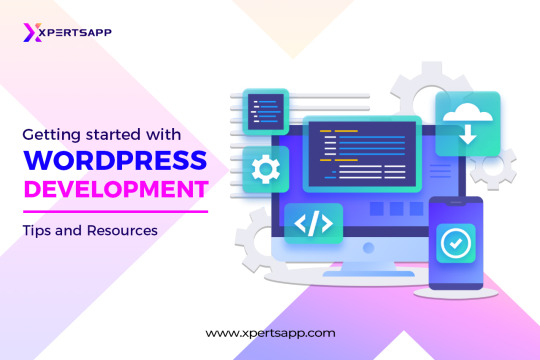
In the world of digitalization, every business must focus on having a digital presence for their brand to increase their traffic for their business to retain more customers. One of the best ways to have a unique digital presence for your brand is through WordPress web development. One of the most known platforms known for creating a website is WordPress web development. You’re choosing to become a part of the WordPress user community worldwide. The platform is maintained by thousands of web developers who work tirelessly to add new features, enhance functionality, and strengthen security. Even better, it’s far more straightforward than you might imagine joining the WordPress community. You must follow the trend to stay under the umbrella of updates to track your business’s growth.
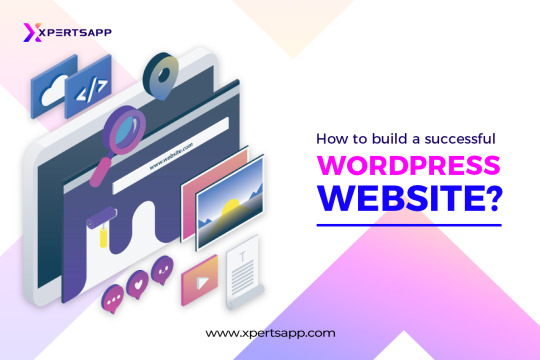
How to build a successful WordPress website?
Once you choose WordPress web development, you must know about the requirements while developing a WordPress website to have a unique and distinctive digital presence for your target audience online and get to know about your brand. Today, launching a website is simpler than ever. The procedure still has several steps. If you pay attention to these steps, your site’s launch might run smoother than you’d like. Additionally, launching a website without any forethought is a formula for catastrophe.
We’ll go through further steps and tips in this article that must be completed before developing a WordPress website. Everything you need to do, from the planning stages of your website to its launch debut, will be covered.
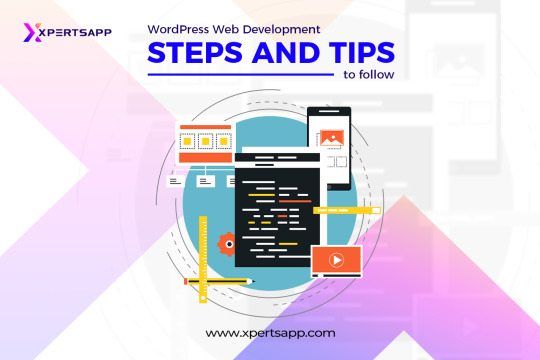
WordPress web development: Steps and tips to follow
Develop the Concept for Your Website
Every successful Website has a concept at its core. You could write about computer lessons, video game reviews, or even movies. Each of those suggestions ought to have a specific objective.
For instance, a website specializing in computer lessons may want to sell products or encourage visitors to enroll in an online course. Before starting to build your website, you must have a solid concept. Otherwise, you’ll aimlessly wander around and squander time.
What you want your website to emphasize should be listed in writing.
Define the main objective of your website (i.e., making you money, positioning you as an expert in your field, just a hobby, etc.).
Consider the demographic of your desired audience.
Think about possible names for your website.
It can take time to identify your intended audience, though. The key is to consider your target audience, which should constitute most of your traffic while choosing the type of material you wish to post. Finally, choosing a name for your website is a very subjective choice. However, since you’ll need to purchase a related domain, we advise sticking with something simple to remember and type.
Choose and Buy a Domain for your WordPress Web Development
Now that the conceptual phase of learning how to establish a website is complete, let’s move on to the technical side. You should sign up for a domain for your website. You can purchase a domain name in many different locations. We advise using a specialized domain registrar in most situations because they frequently have the best selection of Top-Level Domains (TLDs) at affordable pricing. Most of the time, because they are well-established options that people are familiar with, it is usually advised to stick with “.com” TLDs. It’s a minor investment for your website’s future to purchase a regular.com domain, which should cost you roughly $10 per year.
Identify Suitable WordPress Hosting
Finding the web host that will house your website is the next step in your quest. Your choice of provider will be significantly influenced by the platform you use to develop your website. Naturally, it is advised to use WordPress as your Website’s platform because it offers a wealth of tools, plugins, and themes that make it relatively simple to create a unique website. This is the significant role of WordPress when you think of developing a website for your business to have its digital presence. Therefore, the best choice one could make for hosting while developing a website for an online company to a vast audience.
Create the critical content for your website
The majority of new websites launch discreetly. The initial content is mainly ignored until traffic levels go up after an indefinite period. But that doesn’t mean it’s not crucial to start developing the most important content for your website immediately. A new website needs help to gain popularity, especially right after launch. In our experience, writing long-form web copy and blog content focusing on keywords you believe will rank well is the best way to increase traffic numbers.
To make this work, you’ll need to research Search Engine Optimization marketing (SEO) and develop several practical topic ideas. Next, try to write an article that is superior to anything the opposition has on the same topic. In the end, you want to become well-known right away. However, more than a single article will be required, which is where the final step comes into play.
Decide on the ideal theme for your website.
It’s time for your website to start taking shape now that WordPress has been installed and your actual content has been written. Installing a theme that fits the look you want for your website is the first thing we advise you to do.
You can utilize two different types of themes. Also, niche themes are created with a particular kind of Website in mind. You may also look at multipurpose themes, which focus on flexibility and the ability to fit almost any type of Website. Your theme selection should ideally be a long-term choice. In light of this, we advise you to choose the ideal option for you, try it, and proceed to the next stage only after. Your theme selection should ideally be a long-term choice. In light of this, we advise you to choose the ideal option for you, try it, and proceed to the next stage only after.
Install the Required Plugins
It would help if you used “plugins,” one of WordPress’s key selling features, to power the extra functionality on your website. They are simply add-ons, and the ones you choose will primarily rely on the functionality your site will have. The greatest thing you can do is take some time to explore around. The WordPress.org Plugin Directory alone contains over 50,000 free plugins. It has little risk in testing out a plugin if it intrigues you.
However, we advise avoiding plugins with ratings of fewer than four stars and those without any updates in the previous six months. Keeping this general guideline in mind is essential because those can have bugs that haven’t been patched and other vulnerabilities.
Make Your Site’s Design Specific to Your Content and Goals
This process step typically has a big head start because WordPress has a large selection of pre-designed themes and page builders. You get to start with the default design of your parent theme and then modify it to suit your needs. It will probably take some time to combine your site’s design, especially if this is your first attempt. However, it pays to ensure everything looks perfect, so the rest of your site’s launch goes smoothly. Keep in mind to constantly create each page and article to achieve that goal.
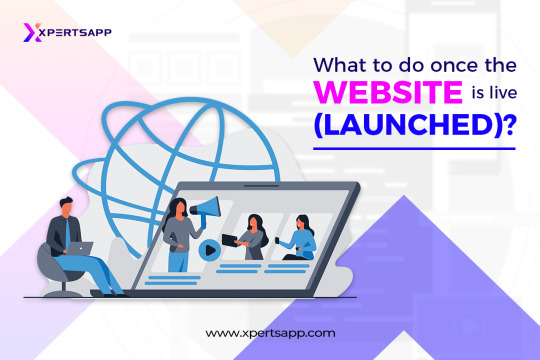
What to do once the Website is live (launched)?
The Website is made once as it has gone through the whole development process. It would help if you created a schedule for new postings after publishing your new site’s first piece of content. An excellent strategy to grow an audience for a new website is to blog at least once every week. It makes sense to compose your website’s critical content before you even launch. As a result, you may devote your whole post-launch weeks or even months to marketing and link-building.
It would be best if you had a social media presence and backlinks to engage with your expanding audience and build an email list. You can launch campaigns and set up autoresponders using a list, which will eventually help drive visitors to your website. How you proceed from here will ultimately depend on your long-term objective. For instance, creating a “passion blog” is not the same as monetizing your website. Finding and fostering guests, however, is a constant concern.
Conclusion
It’s easier to set up a WordPress website than it originally was. Thanks to WordPress’s community-driven, ongoing platform improvements, you can now create a website in a few easy steps. However, you might still require assistance with the trickier aspects. In that case, don’t worry. We are available to you.
For all of your website needs, we provide 24/7 assistance. With the help of our Website Builder, we even further streamline the website-building procedure. Use our Website Builder to access XpertsApp and have your site up and running.
#wordpress#webdevelopment#web developing company#web developers#website design#web hosting#ecommerce#shopify#technology#digital marketing#search engine optimization#search engine marketing
2 notes
·
View notes
Text
Which actions are necessary to make a website?
Creating a website involves several steps, and the process can vary based on your specific needs and technical expertise. Here's a general guide to help you get started:
Define Your Purpose and Goals: Clearly define the purpose of your website. Identify your target audience. Set specific goals for your website.
Choose a Domain Name: Pick a unique and memorable domain name that reflects your brand or content. Choose a domain extension (e.g., .com, .org, .net).
Select a Web Hosting Provider: Choose a reliable web hosting provider that suits your needs and budget. Consider factors like performance, support, and scalability.
Plan Your Website Structure: Create a sitemap outlining the structure of your website. Plan the main navigation and organization of content.
Select a Content Management System (CMS): Choose a CMS like WordPress to manage your website's content. WordPress is a popular choice for beginners due to its ease of use.
Design Your Website: Select a responsive and visually appealing website theme or template. Customize the design to match your brand using the CMS's customization options.
Create and Organize Content: Write and organize the content for your website. Ensure your content is engaging, informative, and optimized for search engines.
Integrate Essential Features: Add necessary features such as contact forms, social media integration, and analytics. Install any plugins or extensions required for additional functionality.
Optimize for SEO: Optimize your website for search engines by using relevant keywords and meta tags. Create a robots.txt file and sitemap.xml to help search engine crawlers navigate your site.
Test Your Website: Test your website's functionality across different browsers and devices. Ensure that all links work, forms are submitted correctly, and pages load quickly.
Launch Your Website: Register your domain and set up hosting. Point your domain to your hosting provider. Launch your website to make it accessible to the public.
Promote Your Website: Share your website on social media. Implement an online marketing strategy to drive traffic. Consider paid advertising if it aligns with your goals.
Monitor and Update: Regularly update your content to keep it fresh. Monitor website analytics to understand visitor behavior. Make updates and improvements based on user feedback and analytics.
Remember, this is a simplified overview, and the specific steps may vary depending on your technical expertise and the complexity of your website. If you're new to website creation, platforms like WordPress often provide user-friendly interfaces and extensive documentation to help you through the process. You can buy WordPress Premium Theme to easily design your website.
#premium wordpress themes#premium wordpress theme#wordpress premium themes#app landing wordpress theme#education wordpress theme#consulting business wordpress theme#paid wordpress themes#education & online course wordpress theme#wordpress plugins#online learning wordpress theme#best business theme wordpress#business#business growth#finance#management#entrepreneur#marketing#business consulting wordpress themes#lethal company#limbus company#seo company#digital marketing company#good smile company#services#apple#site#development#best wordpress theme for medical website#webdevelopment#website
4 notes
·
View notes
Text
Edutec - Education LMS WordPress Theme
Transform your educational platform with Edutec, the premier Education LMS WordPress Theme that seamlessly integrates Tutor LMS and Elementor Page Builder. Are you tired of clunky, outdated designs that hinder your teaching potential? Edutec offers a sleek, modern solution tailored for educators who want to engage their students effectively.
With features like One Click Demo Import, advanced theme options, and comprehensive video tutorials, setting up your online courses has never been easier. Imagine having the flexibility to customize your learning environment without any coding knowledge! Edutec empowers you to create immersive educational experiences that captivate and inspire.
Read More - https://www.templatemonster.com/wordpress-themes/edutec-education-lms-wordpress-theme-458726.html
#lms wordpress theme#course#online courses#online learning#courses website#course selling website#education website#education wordpress theme
0 notes
Text
Education WordPress theme - Create, publish and sell courses online, a complete courses and learning website builder powered by drag and drop page builder for creating school/university/academic/college websites https://visualmodo.com/theme/education-wordpress-theme/ 🎓💼💻📱📚📖
education #courses #learning #theme #wordpress #responsive #academic #templates #webdesign #webdevelopment #plugins
2 notes
·
View notes
Text
From Zero to Hero: Building Your First Affiliate Blog from Scratch

Alright, fellas, strap in because today we're diving deep into the world of affiliate blogging. We're talking about going from absolutely nothing to being the hero of your own online success story. It's time to build your first affiliate blog from scratch and carve out your slice of the digital pie.
So, where do you start on this epic journey? Well, first things first, you need a game plan. You can't just dive in blindly and hope for the best. Take a moment to map out your vision for your blog. What niche are you passionate about? What products or services do you want to promote? Get crystal clear on your goals because clarity is key to success.
Once you've got your vision locked in, it's time to get technical. Don't worry, you don't need to be a coding whiz to build a killer blog. Platforms like WordPress make it easy for even the tech-challenged among us to create professional-looking websites. Choose a clean, user-friendly theme and start customizing to make it your own.
Now, onto the fun part: content creation. This is where you really get to flex your creative muscles and showcase your expertise in your chosen niche. Whether you're into fitness, finance, or fashion, there's an audience out there hungry for your knowledge. Start brainstorming topics that will resonate with your target audience and get to writing.
But hold up, bro, before you hit publish on that first blog post, there's one crucial step you can't skip: keyword research. This is how you'll ensure your content gets seen by the right people. Use tools like Google Keyword Planner or SEMrush to identify high-volume, low-competition keywords related to your niche. Sprinkle these keywords strategically throughout your content to boost your blog's visibility in search engine results.
With your content live and kicking, it's time to start promoting like a madman. Share your blog posts on social media, join relevant online communities, and reach out to influencers in your niche for collaborations. The more eyeballs you can get on your content, the better chance you have of driving traffic and, ultimately, making those sweet affiliate commissions.
Speaking of affiliate commissions, let's talk monetization. This is where the magic happens, my friends. Sign up for affiliate programs relevant to your niche and start embedding those affiliate links into your blog posts. But here's the golden rule: only promote products or services you genuinely believe in. Your audience can smell a sellout from a mile away, so stay authentic and only endorse stuff you'd actually use yourself.
Now, I know what you're thinking: "But bro, how long until I start seeing some serious cash flow?" Here's the truth, my friend: Rome wasn't built in a day, and neither is a successful affiliate blog. It takes time, dedication, and a whole lot of hustle to make it in this game. But if you stay consistent, keep learning, and never lose sight of your goals, you'll be well on your way to affiliate marketing glory.
So there you have it, guys. Building your first affiliate blog from scratch might seem daunting at first, but trust me when I say it's worth the grind. Follow these steps, stay true to yourself, and before you know it, you'll be the hero of your own online success story. Now get out there and start hustling!
3 notes
·
View notes
Text
5 Key SEO Trends for 2024: Actionable Insights for WordPress SEO Managers
As we approach 2024, the SEO landscape continues to evolve, presenting new challenges and opportunities for SEO managers, particularly those working with WordPress websites. Keeping abreast of the latest trends is essential.
We’ve been reading blogs, news and watching conferences and we thought this would be useful for any SEOs working with Wordpress.
So, here are five key SEO trends for 2024, accompanied by practical insights tailored for your needs.
1. Embracing AI in SEO Strategy
Trend Insight: Artificial Intelligence (AI) is revolutionising SEO strategies. From content creation to understanding user intent, AI tools are becoming indispensable. Action for WordPress Managers:
Utilise AI-powered SEO plugins to optimise content for search intent and keyword relevance.
Employ AI tools for content analysis, ensuring it aligns with user queries and intent.
Use AI for automated site audits to identify and rectify SEO issues efficiently.
2. Search Experience Optimisation (SXO)
Trend Insight: Google’s shift towards evaluating the overall helpfulness of a website means Search Experience Optimisation (SXO) is more crucial than ever. Action for WordPress Managers:
Focus on user experience (UX) elements like site speed, mobile responsiveness, and intuitive navigation.
Utilise WordPress themes and plugins that are optimised for speed and user experience.
Regularly update content to keep it relevant, engaging, and helpful to your audience.
3. Content Authenticity and Expertise
Trend Insight: Google's emphasis on E-E-A-T (Expertise, Experience, Authoritativeness, and Trustworthiness) underscores the need for content authenticity and expertise. Action for WordPress Managers:
Prioritise original, well-researched content that showcases expertise in your niche.
Encourage subject matter experts to contribute or review your content.
Use author bio plugins to highlight the credentials of content creators.
4. Structured Data and Schema Markup
Trend Insight: Structured data is increasingly important for helping search engines understand and index your content more effectively. Action for WordPress Managers:
Implement schema markup on your site using WordPress plugins like Yoast SEO or Schema Pro.
Use structured data to highlight key information like products, reviews, and FAQs.
Regularly check Google’s updates on schema requirements and adjust your site’s markup accordingly.
5. Voice Search Optimisation
Trend Insight: The rise of voice assistants and voice search necessitates adapting content for conversational queries. Action for WordPress Managers:
Optimise content for natural language and conversational queries.
Include long-tail keywords that mirror how people speak.
Ensure your local SEO is robust, as many voice searches are local in nature.
By keeping informed and adapting to these trends, SEO managers can ensure their WordPress sites not only keep pace but lead in the competitive online environment of 2024. Remember, SEO is a dynamic field; continuous learning and adaptation are key to success.
We hope this helps!
Merry Christmas from us to you!
5 notes
·
View notes